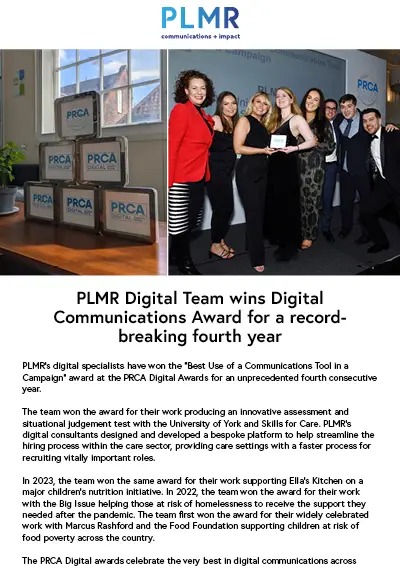A good photo can make or break a PR story. It can bring your words to life, add personality to your business and can even make a difference as to whether an editor will use your story or not.
Some press outlets may even discard stories if there isn’t any accompanying imagery, or you could risk sitting alongside a bland stock photo that doesn’t reflect your story or your business.
Even with all of today’s editing tools and filters, a poor-quality photo is difficult to disguise and it can change people’s perceptions about your business. PR photography requires forward planning and creativity – here’s some top tips to help you ace your next PR photography opportunity:
The five W’s
Take time to think carefully about what you want to achieve before you pick up the camera. Remember the five W’s: Who needs to be in the photo, What are you trying to illustrate, When will the photo be taken, Where will the photo be used, and Why is the photo necessary.
The audience and purpose of your photo will help you to determine the right location and style. Are you using it for print, digital or social media? Does it need to be formal and corporate, or can it be fun and relaxed? Thinking about why you’re taking the photo will also help you to focus on the end result.
Be creative
Whilst it’s important that your photo says the right thing, don’t be afraid to think of creative ways to illustrate your story. Look at how you could position subjects differently (avoid a straight line-up) and try taking the same shot from different angles and heights. Utilise your surroundings and introduce some props to make the shot less formal. Set up several different shots so that you have a choice to use for different purposes – for social media, your website and for different press outlets.
Think about lighting
The wrong lighting can spoil a good photo, no matter how well it’s set up. If you’re outside, think about the time of day. Avoid shadows or subjects squinting into strong sunlight. If you’re indoors, make sure the lighting looks natural and isn’t too bright or too dark – try taking the photo with and without a flash.
Plan your location
This can be a challenge with a spontaneous snap or at a busy event, so make sure you plan ahead where possible. For example with a formal cake cutting, make sure the cake is in the right position before guests arrive.
If you need to take a wide angle shot to fit a number of subjects in the frame, don’t forget about what else can be seen in the background. Look for an interesting, colourful and tidy backdrop that doesn’t detract from the main focus. Watch out for unsightly objects too such as bins, fire exits and signs.
High resolution for press
When taking a photo to be used for press, it needs to be good enough resolution for print media but not a huge file size that could risk clogging an editor’s inbox. Aim for at least 1MB file size, maximum 2MB. Photos for digital and social media can be lower resolution (Twitter has a 5MB limit) but a 1MB file size should be good enough quality for all platforms.
If you’re taking a photo on a smartphone, either plug your phone into your computer to extract the photo at full size, or email it and select the highest resolution option.
Lastly, remember to add a photo caption citing subject names and titles from left to right.
A photo can say a thousand words but with forward planning and creativity, you can make sure that those words reflect your story and your business in the best way. For more PR advice or information on how we could help you, please call us on 01473 326400 or email hello@genesispr.co.uk.



